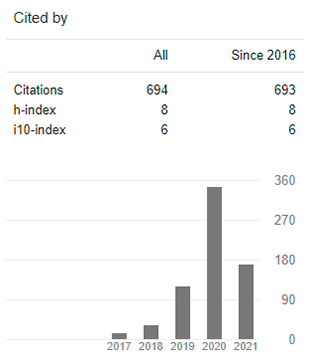Gamification and Its Contribution to the Metalanguage of Chemistry in General Unified Baccalaureate
La gamificación y su aporte al metalenguaje de la química en Bachillerato General Unificado
DOI:
https://doi.org/10.29394/Scientific.issn.2542-2987.2023.8.30.3.65-81Keywords:
learning, entertainment, technology, inorganic chemistryAbstract
This study examines the impact of gamification on the metalanguage of chemistry for second-year students of the Unified General Baccalaureate (BGU) at the Luis Cordero Educational Unit during 2021. The research addresses the negative influence of digital entertainment media on learning of chemical compounds. The objective is to analyze this effect and propose solutions through gamification. The methodology adopted is field and educational action, with an experimental design and a sample of 34 students from the second BGU “E”. Surveys and interviews are used to collect data. The results highlight students' difficulties in identifying and naming chemical compounds due to the excessive use of digital media. The findings highlight the need to improve access in rural areas, address gender inequalities and use gamification as a strategy for more effective learning. The importance of training for social mobility is highlighted and actions are proposed to improve equal opportunities in the Ecuadorian educational system.
Downloads
References
Espinosa, R. (2016). Juegos digitales y gamificación aplicados en el ámbito de la educación. Ried: Revista Iberoamericana de Educación a Distancia, 19(2), 27-33, e-ISSN: 2542-2987. Recuperado de: https://doi.org/10.5944/ried.19.2.16143
Farré, A., Zugbi, S., & Lorenzo, M. (2014). El significado de las fórmulas químicas para estudiantes universitarios. El lenguaje químico como instrumento para la construcción de conocimiento. Educación química, 25(1), 14-20, e-ISSN: 1870-8404. México: Universidad Nacional Autónoma de México.
Gutierrez, A., & Barajas, D. (2019). Incidencia de los Recursos Lúdicos en el Proceso de Enseñanza-Aprendizaje de la Química Orgánica I. Educación Química, 30(4), 57-70, e-ISSN: 1870-8404. Recuperado de: http://dx.doi.org/10.22201/fq.18708404e.2019.4.69991
INEVAL (2018). Educación en Ecuador: Resultados de PISA para el Desarrollo. Primera Edición. Quito, Ecuador: Instituto Nacional de Evaluación Educativa.
MINEDUC (2019). Currículo de los Niveles de Educación Obligatoria: Nivel Bachillerato. Tomo 1, Segunda Edición. Quito, Ecuador: Ministerio de Educación del Ecuador.
Questa-Torterolo, M., Tejera, A., & Zorrilla, V. (2022). El videojuego en el aula: su inclusión como estrategia didáctica. Cuadernos de Investigación Educativa, 13(2), 5-21, e-ISSN: 1688-9304. Recuperado de: https://doi.org/10.18861/cied.2022.13.2.3250
Rivera, E., & Torres, V. (2018). Videojuegos y habilidades del pensamiento. Ride: Revista Iberoamericana para la Investigación y el Desarrollo Educativo, 8(16), 267-288, e-ISSN: 2007-7467. Recuperado de: https://doi.org/10.23913/ride.v8i16.341
Tapia, T., Arias, A., & Wertermeyer, M. (2018a,b,c). Gamificación: Propuesta Didáctica para la Enseñanza de la Química en Cursos Masivos. Revista Internacional de Aprendizaje en Educación Superior, 5(2), 81-88, e-ISSN: 2386-7582. Recuperado de: https://doi.org/10.37467/gka-revedusup.v5.1839
Downloads
Published
How to Cite
Issue
Section
License
Copyright (c) 2023 INDTEC, C.A.

This work is licensed under a Creative Commons Attribution-NonCommercial-ShareAlike 4.0 International License.
The content of the journals of this site, are under a Creative Commons Attribution-Noncommercial-Share Alike 4.0 International License.













